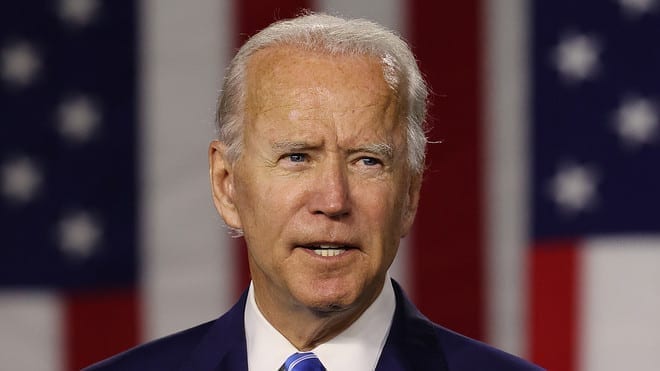
The Joe Biden Administration will maintain all three legs of the U.S. nuclear triad, which need to be modernized to remain relevant, a senior Pentagon official said Tuesday.
“At least in this current moment, in the current security environment, and again validated all the way up to the President … we needed to retain the triad at this time and that’s what we’re doing,” Richard Johnson, deputy assistant secretary of defense for nuclear and countering weapons of mass destruction policy, said Tuesday at the Atlantic Council think tank in Washington.
Johnson spoke less than a week after the administration published the unclassified version of its long delayed nuclear posture review, which with the notable exceptions of recommending cancellation of a sea-launched nuclear cruise missile and the retirement of the B83 gravity bomb largely continued the procurement policies of the Donald Trump and Barack Obama administrations.
While the Biden administration crafted its posture review, there was discussion of performing yet another service-life extension on Minuteman in lieu of continuing with the plan to procure replacement Sentinel missiles, Johnson said Tuesday.
But “we determined that, basically, enough time had gone by that because of changes in technology, the supply chain, and things like that, it would actually cost us more money and give us more risk if we had tried to do one more extension.”
“What we’re really doing here in our modernization program is looking to replace legacy systems, but the basic mix of systems that we’re looking at in our modernization is not really changing over time,” Johnson said. “ We are now looking at having to do some new systems because, frankly, technology just ages out.”
Also at the Atlantic Council on Tuesday, Cindy Lersten, director of the National Nuclear Security Administration’s (NNSA) office of policy and strategic planning, said the civilian agency worked with the Defense Department, the International Atomic Energy Agency (IAEA), and other partners to ensure the U.S. nuclear stockpile is modernized to strengthen future deterrence while maintaining a high threshold for use in conflict.
“We really worked hard to stress how we need to modernize not just the weapons, but the infrastructure, and also give some time and attention to making sure that our labs, plants, and sites that their workforce are ready to go because we can’t do this without them,” Lersten said at the event.
The new-start W93 warhead program is one of the keys to keeping the nuclear security enterprise sharp, Lernsten said.
Procurement of the weapon, slated to begin replacing the W76 and W88 warheads on U.S. Navy submarines in 2035 will “ensure that we’ve got a modernized infrastructure and that we have everything we can to modernize the stockpile,” Lersten said.